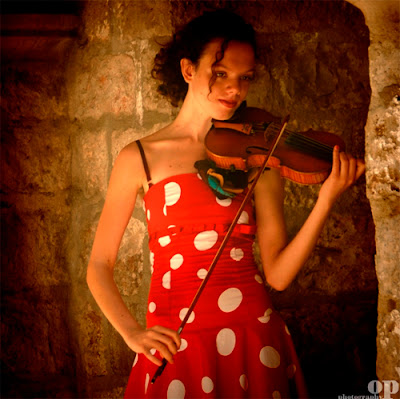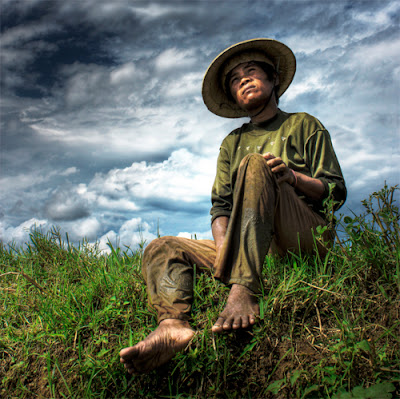Background is one of the most important factors that make the difference between a good shot and a great shot. This is more so in case of environmental portrait photography. And lack of attention to the background settings is undoubtedly the most common mistake made by amateur photographers.
The immediate backdrop of a portrait can make a world of difference to the mood and emotion of your pictures. Using the appropriate background could help you make your portraits stand out of the crowd by helping you do the following in your shots.
The immediate backdrop of a portrait can make a world of difference to the mood and emotion of your pictures. Using the appropriate background could help you make your portraits stand out of the crowd by helping you do the following in your shots.
- Create a Mood
- Experience the Place &
- Narrate a Story
All are essential elements of great portrait photography. So let us see how best we could work the available background to our advantage and achieve the desired results.
Background that Complements your Subject
Fist thing to give attention is to find a background that complements your subject that matches the mood of your shot and also complements the colour of your subject and his / her dress. The colour of the background should not be similar to the colour of your subjects dress such that it appears to merge.
 |
| Photo by Georges |
Remove / Crop Distractions
Next thing to look out is for distracting elements in the shots. Have a look through the viewfinder and closely observe whatever is in the frame. If you find any distracting elements try to recompose your shot from a different angle avoiding the distraction, else if you could remove it then do so. Or you could simply zoom in and compose a tighter frame.
 |
| Photo by NA PIX |
Blur the background to make your subject stand out
If the background available for you is not appealing or if it is attracting too much attention on to itself then you could try to blur it out and thus make your subject stand out in the frame. You could achieve this by;
- Selecting a wide aperture (wider the aperture setting more the blur)
- Using a lens with a longer focal length. (longer the focal length more the blur)
- Increasing the distance between your subject and background (the more the distance between the subject and the background the more the blur)
 |
| Photo by Momoyama |
Remember these things all work together so you could achieve a perfect blur by moving your subject far from the background, use the telephoto end of the lens and select the widest possible aperture.
Make the Available Background Unavailable
Yes you can do it, you can make your background go perfectly black or white just by adjusting your exposure settings. In order to achieve this you should have a sharp contrast with the amount of light falling on your subject and on to the background. Also you could achieve the same effect my selecting combination of a small aperture and a fast shutter speed there by making the available light unavailable and using flash to light up your subject. Remember to select the spot metering mode in your camera and meter from your subject to get the trick right.
 |
| Photo by Cuba Gallery |
Complement your subject’s Eye Colour
You might be aware of the importance of catch-light in portrait photography it adds depth and dimension to the eye in a portrait. Similar is the effect that background with colours that complement the eye colour of your subject has. So select backgrounds with shades of brown for a person with brown eyes and select a green lawn or green bush as background for a person with green eyes etc.
 |
| Photo by Anton |
Experience the Place – Pay attention to Perspective
A common mistake made by a lot of people who are beginners to photography is ignoring the effect of perspective. If for example you shoot your friend in front of an important historical monument make sure that the person in the frame and the monument is relatively well proportioned. Else you could end up having a shot in which the person standing in front of the monument is just a tiny shape not even recognizable. The trick here is to experiment with perspective and different types of framing and obtain the right balance.
 |
| Photo by Parmalate |
Create a Mood
Background could help create a mood for the photograph, imagine a cheerful subject in the backdrop of a well lit snack bar, man with a fierce expression with a stormy sky as the backdrop etc. the location and backdrop lends its own mood and emotion to the picture, the subject need only complement it. This is especially helpful while shooting people who are not very good at expressions, body language and poses.
 |
| Photo by Osvaldo |
Narrate a story
Your portrait shots should be able to narrate a story about your subject to the viewer. Eg. A chef instructing others in a large kitchen. A man in business suits with a helicopter as background etc. They tell a lot about who a person is, what work does he do, his current mood, (gloomy, enigmatic) etc etc. so an appropriate background is your best option to narrate your subjects story.
 |
| Photo by Dr Mario |
Use Bokeh and Flare to Enhance Background
A good use of bokeh is one thing most people like in a photograph, but most are allergic to flares, it may be because in cases where the flare happens by accident it more often than not destroys the image, but if done carefully introducing a flare could actually give your shot a special feel.
 |
| Photo by Isayx3 |
So next time you are out there shooting portraits do give proper attention to these points and let us know what effect they had, or if you have a tip or two of your own you are most welcome to post them in the comments column.
In the next article we will discuss about Photography - Portrait Photography - 5 Tips for Creative Portrait Photography
In the next article we will discuss about Photography - Portrait Photography - 5 Tips for Creative Portrait Photography
Post a Comment